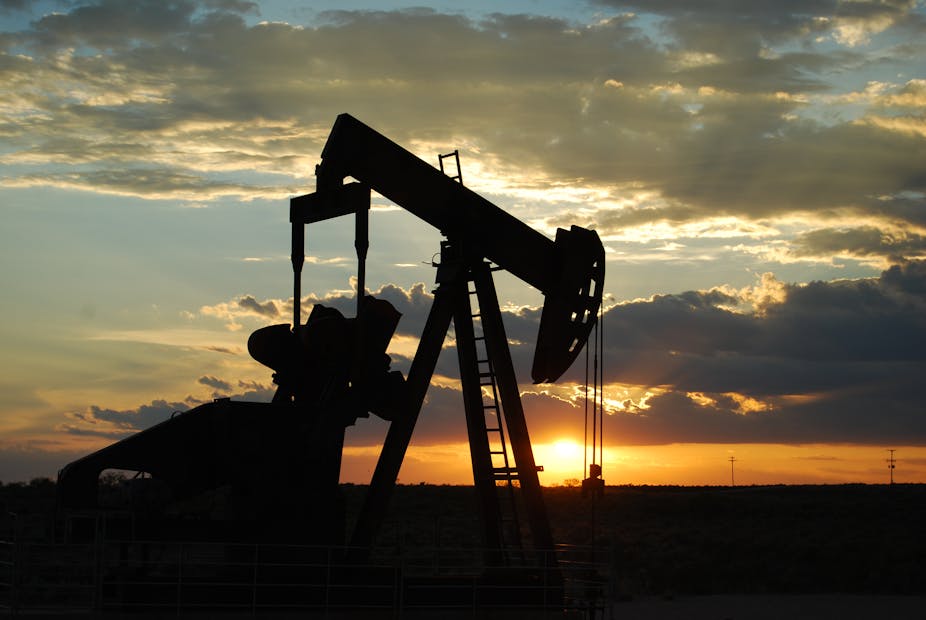A common topic of discussion in Iran is oil and the mixed blessing it represents. The country’s recent history has been intertwined with that of international oil politics since 1908, when William Knox D'Arcy discovered a rich reservoir of oil in south-west Iran. Since then, oil has been the Ariadne’s thread of Iranian politics. And, whether a blessing or a curse, it has been a major guarantee of relative wealth for many Iranians.
With 9% of the world’s oil reserves and 14% of its gas reserves, Iran’s hydrocarbon reserves are among the biggest on the planet. The Iranian state has long attempted to manage the money earned from this resource to make sure it was not simply consumed, but invested in the future.
Much of this, however, was dismantled under the former president, Mahmoud Ahmadinejad, who implemented a subsidy system in a bid to use the country’s resources more efficiently. Among his bombastic slogans was: “Bringing oil money to people’s dinner tables”. And, since US-led sanctions have hit the Iranian economy, oil revenues have increasingly been used to pay for the cash hand-outs that go to all Iranian citizens each month.
Delayed effect
The recent fall in oil prices to around US$80 a barrel is therefore a significant cause for concern. Iran’s budget for this financial year was planned on an estimated oil price of US$100 per barrel. In the short term, life will continue as usual in Iran as the price drop will take effect with a delay. But if US$80 is here to stay, the country must get serious about reforming its economy to reduce its reliance on oil revenues.
Until October, Iranian oil prices averaged US$103 per barrel, based on OPEC figures. So, even if oil prices stay close to US$80 for the rest of the financial year (which ends in March in the Iranian calendar), the average annual price will work out at about US$92 a barrel. Therefore, it seems unlikely that government spending will suffer as a result of lower oil prices – at least until March 2015.
At present there is a delay for Iran in receiving its oil revenue under the terms of the sanctions package imposed on Tehran. So ironically, there is also a delay in the impact of oil price fluctuations on the economy – allowing the government time to think and plan ahead. As Iran’s minister of economic affairs, Ali Tayyebnia, recently stated, the country receives oil revenues sales four to five months after they are made and so there is time to prepare for the impact of the recent oil price reduction.
Long-term pain
Should oil prices remain persistently lower than predictions, however, the economy of Iran – already under the pressure of economic sanctions – is likely to suffer and could face domestic challenges. As noted, most Iranians rely on food and energy subsidies through the monthly cash hand-out to every registered Iranian.
According to the latest growth figure reported by the Central Bank of Iran, the Iranian economy grew by 4.6% in the second quarter of 2014, which brought the country out of recession. But the estimated growth needed to achieve steady economic development is put at 7-8% annually. It is hardly imaginable that the government will be able to extract tax revenues from an already weakened private sector.
But a reduction in the energy subsidy hand-out is politically unthinkable for the government. For unemployed citizens – which make up about 10% of the population – these cash subsidies are their only source of income. For a family with two children the cash handout amounts to almost 30% of the monthly minimum wage. Hence, it is both a vital contribution from the state, as well as being a symbolic oath of support which dates back to the Iranian revolution.
When he came to power in 1979, Iran’s new leader, Ayatollah Ruhollah Khomeini declared: “Water and energy will be free of charge for every Iranian citizen” and “the oil revenues will be equally redistributed to the Iranian households”. The free flow of oil has, however, led to a great deal of waste. And, 35 years later, with a domestic economy struggling to provide employment opportunities for the younger generations, oil money has not fostered a high level of social equality.
Moves toward privatisation
So far, the current administration has pushed forward a set of privatisation plans in the industrial and mining sectors. Although this move could potentially lead to greater dynamism in the Iranian economy, it undermines the position of the workers and dependent social classes, as well as failing clamorously under the previous administation. It is no coincidence that in the last few months there has been a wave of strikes and labour activism across the country.
Meanwhile, the Iranian government continues to seek diplomatic rapprochement with the West. A key motivation of this is to stabilise the economy and attract foreign investment into the country. As one of the world’s largest markets still closed to global capital, the lifting of US-led sanctions would make Iran fertile ground for large-scale international investment.
Should this take place, the Iranian government might be able to compensate the losses from oil prices. The private sector is likely to benefit from lower-risk investment and employment opportunities could be boosted. However, it could also bring with it a whole set of different economic problems such as the decline of nationalised industries which will struggle to keep up with international competition and the further marketisation of domestic goods and services which will lead to rising costs for the citizenry.
In the words of Iranian sociologist, Asef Bayat, it could transform the Iranian city into something less inhabitable. They run the risk of becoming “a market-driven urbanity … shaped more by the logic of Market than the needs of its inhabitants; responding more to individual or corporate interests than public concern”.

